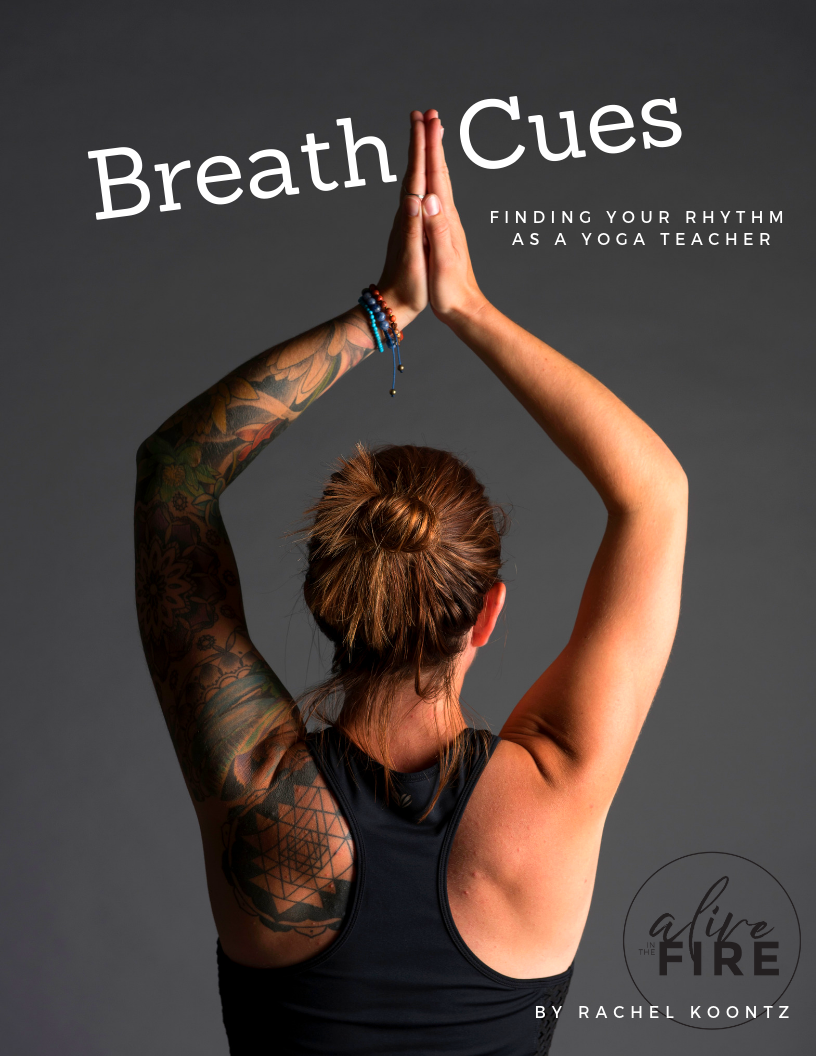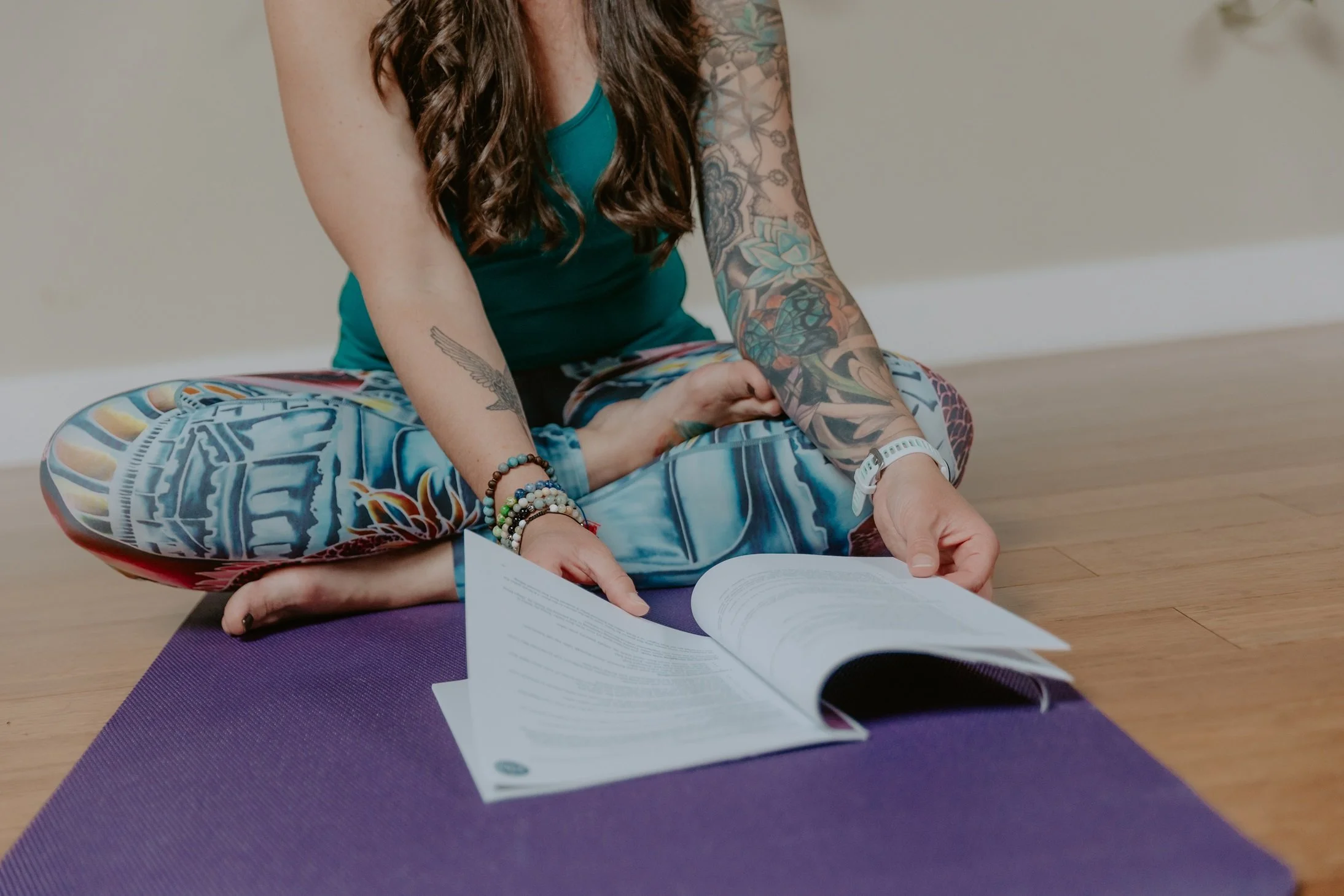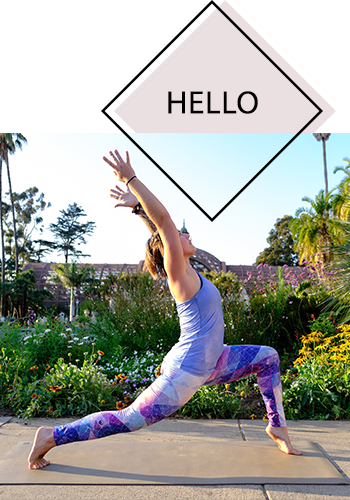Yoga Teacher Training and Memorizing the Baptiste Flow
/A few years ago, I completed my first yoga teacher training to become a Vinyasa yoga 200 hour certified teacher. As part of my training, I memorized the Baron Baptiste vinyasa flow. This series of sun salutations followed by a variety of basic Hatha postures can serve as a great basic foundation for teaching a 60-75 minute yoga class.
For all of you yoga teachers out there, you know the challenge of learning a flow. You’ve got to repeat it over and over until it’s second nature. There’s a lot to think about: remembering the sequencing, staying in tune with the breath, reading the energy levels of students, and staying on track with the timing of the overall class. Early on in this process, it's helpful to focus on the basics— knowing the order of the poses and the basic cues for getting students in and out of the poses safely.
Since there’s not a lot of info online about methods for memorizing a flow, I wanted to share what has worked for me. Please feel free to add your thoughts in the comments, too!
How to Memorize a Yoga Flow On Your Own
• Read it
I look over my outline of the poses frequently. It helps to get an in-depth guide by referring to Baron Baptiste’s Journey Into Power, and it’s also great to have a bare-bones outline simply for memorizing the order of the poses.
• Write it down
Especially if you are a kinetic/ visual learner, it’s helpful to write out the order of the flow yourself. Put things into your own words. Add colors, highlights or symbols as a way of reminding yourself of the details. Make a chart or create a diagram that will jog your memory.
• Group postures into sections
In the Baptiste flow, the class is organized into segments which correspond to the type of energy you’re generating in the body. For example, Sun A and Sun B salutations are followed by a vigorous series of postures referred to as “Vitality.” As you’re getting started, focus on the bigger picture: how each segment of class leads into the next. Consider the peak / high point of class when students are exerting the most energy, and how you want to build them up to that point, and then cool them down afterward.
• Feel the flow in your own body
. I’ve found perhaps the easiest way to memorize the flow is to practice it on my mat repeatedly, to the point where my body knows what’s coming next without me having to consciously think about it. Once I have this body memory established, I can access it while I teach. Even a simple arm movement or twist can serve as a reminder for where to take students next.
• Speak the flow out loud as you practice it on your mat
If you’re going to use the above point as a way of memorizing, consider adding an additional level of depth: actually speak as you move through the postures. This will help you develop physical strength, both in your voice and your breath, as well as solidify the flow in your mind.
• Speak the flow out loud driving to and from work, or during a road trip
This has been my most effective method so far! Every morning and evening during my commute, I commit to practice teaching in my car. I like to chant to some kirtan music first in order to find my focus (lately it’s Ganesha Sharanam and Kali Bolo with Jai Uttal, whose voice inspires me every time!). Then I settle in and go through section by section, or jump in midway through the class and do, for example, only the “Balancing” series, or just Sun A through Vitality. Depending on where I feel I need more work, I can focus in on different sections or specific postures and practice those over and over.
• Be patient
Practice ahimsa with yourself, speaking only kind words, accepting and loving yourself no matter what happens. Thank yourself for working through fear and discomfort. Apply what you know about being on your mat to your teaching: practice, and all is coming.
Memorizing a Yoga Flow in a Group
• Practice teach with a partner
Getting together with fellow teacher trainees to do one-on-one teaching has really boosted my confidence. I find that I’m most comfortable in a small setting where I feel less pressure to perform, and where there’s not too much attention on me. When I’m working directly with a student, I’m also able to learn more quickly how well my words are being communicated and whether they make sense or not. Watching a student closely can also give me hints about better ways to cue alignment, and how to get my pacing on track to accommodate for much time it takes to transition between postures. Small group settings have helped me integrate my identity as a teacher, and really step into my voice with assurance and assertion.
If you're in a training, make plans with your fellow teachers and create a mini-class! You can teach round robin style where you each have a part and you switch from person to person. Also feel free to invite friends and family over for a full class. This will be helpful so you can start to learn to link together the different sections of the flow and create a more cohesive experience for students.
• Practice teach in front of a large group
While getting together in small groups was a great way for me to practice teach, it was also important for me to step outside of my comfort zone and teach in front of larger groups. Standing in front of a large group has been perhaps the most insightful experience of teaching, and it’s because it’s the hardest. I get nervous and have to make a very conscious effort to ground down, stand in my feet, find confidence in my words, and just generally relax. Patience and presence are key for teaching in front of a large group, and for me, the experience becomes more rewarding the more I detach from the outcome and am able to be kind with myself about any hiccups along the way.
• Notice your body language and where you stand in the room
Puff your chest up, and let your shoulders rest down your back. Be confident. Allow yourself to be seen by your students. They're grateful to have you!
• When you forget, keep going
More often than not, your students will hardly notice that you missed a halfway lift or asked them to twist in the wrong direction during crescent lunge—unless your voice shows it. However much attention you give to your “mess up” is how much attention your students will give it. Be assuring and confident with your energy; others feed off of that. And honestly, there’s no need to apologize! Saying “I’m sorry” while you’re in the middle of leading class is distracting. Instead, just keep going! You know what you’re doing, and if you get confused, your students will show you the next posture. Or, if worse comes to worse, let them rest in child’s pose! Give yourself a moment to gather your thoughts. Trust your ability to be spontaneous and allow yourself to breeze through mistakes.
Other Ideas to Try
• Record the flow and listen to it
By recording your own voice, you’ll pick up on patterns in your speech, intonation and pacing. You can see if you’re repeating certain words too frequently, or perhaps forgetting certain cues. Listening to a recording by your favorite teacher can also be a great way to emulate what you like about their methods in class. And again, solid repetition of the flow helps ingrain it into your head.
• Create flashcards and eventually use them to bring in variety in your flow
I have a plan to make a flashcard for each posture in the series. As I’m building my foundation, I’ll flip through them in the exact order of Baron’s flow. As I become more comfortable playing with sequencing, I’ll re-order them differently and see what unique progressions make sense and work well.
• Work with a coach or mentor
Find another teacher who can help and who will provide honest feedback on your teaching.
PS Wondering what the Baptiste flow is? See below for the whole sequence.
Need more support?
I help yoga teachers find clarity and authenticity as they launch their teaching careers.
These two yoga e-books can help you refine your cues and find your rhythm as you’re teaching.
Power Vinyasa Yoga Script | Yoga Script for Teachers | Alive in the Fire
The Power Vinyasa Yoga Script is a valuable tool for yoga teachers to improve cues, build confidence, and guide students through poses. Enhance your teaching skills with this essential yoga script.
Calling all new yoga teachers! Are you ready to teach a badass power yoga class?! This script can help you improve your cues, build your confidence, and discover the sequencing and pacing that will define your unique style as a teacher. A great tool for transitioning from your yoga teacher training into any environment where you are leading classes, whether that’s a studio, gym, corporate setting, or private classes.
Who is this power yoga script for?
New teachers in their first year of teaching who want to build confidence
Experienced teachers who want to be more precise in their cueing
Any yoga teacher looking to discover their voice and feel prepared to teach
If you are struggling to remember what to say when you teach, or you’re having trouble guiding students from pose to pose, this script can help. The Power Yoga Script breaks down exactly what verbs and cue details to use as you teach. Are there fears or insecurities holding you back? Are you comparing yourself to other yoga teachers instead of letting your voice be heard? Explore the big questions behind how and why you teach using this helpful guide.
The sequencing follows the Baptiste methodology including the following sections: Integration, Awakening, Vitality, Equanimity, Grounding, Igniting, Stability, Opening, Release, Rejuvenation and Deep Rest.
This 48-page script includes:
Introductions
Warm ups
Sun salutations
Warrior poses
Balancing poses
Triangle series
Backbending
Abs and core work
Hips
Forward bending
Inversions
Cool down and shavasana
There’s also space for you to plan out a class and write out all the cues you’ll use to guide students safely through the poses, plus a list of questions to help you discover where you’re feeling stuck.
Precise cues, smart sequencing, and ideas for how to start and end the class in an engaging and authentic way. Walk into class feeling empowered and prepared to deliver a kick-ass yoga experience to your students.
Take your teaching from basic to badass with this power yoga script.
Here’s what yoga teachers are saying about the POWER YOGA SCRIPT:
“This definitely helped me improve my flow with teaching asana after my teacher training.” -Donita, Vinyasa yoga teacher
”I love how you laid this script out. I felt confused and scattered as I was working on my classes and this helped me save time in the process. Thank you!” -Keyla, yin yoga teacher
“I’ll be honest: when I got done with my 200-hour training, I felt totally lost. I mean, my trainers went over all the poses but as soon as I’d get in front of the room, the words just weren’t there. I felt so stuck. This book helped me build my confidence and doing some memorization so I wasn’t always so terrified to teach.” -Beth, power vinyasa teacher
Included in the e-book:
A printable checklist for tracking your weekly breath cue practice
A printable breakdown of Vinyasa flow sequencing and breath cues for Sun Salutations (A & B)
Short sequences for warm ups, core, leg strengthening, back strengthening and cool down
A journal entry page to help you work through any blockages or frustrations that are holding you back
The Baron Baptiste Vinyasa Flow
*Note: sun salutations can be repeated 3-5 times. For each of the series starting at Balancing (Equanimity), 2-4 poses are taught for a 60-minute class.
Integration Series: Presence
Child’s pose
Downward facing dog
Rag doll
Mountain pose
3 OMs
Sun Salutation A: Awakening
Arms up
Forward fold
Halfway lift
High plank
Low plank or all the way to the ground
Cobra or upward facing dog
Downward dog
Sun Salutation B: Awakening
Chair
Forward fold
Halfway lift
High plank
Low plank
Updog
Downdog
Warrior I (right foot forward)
Chaturanga
Updog
Downdog
Warrior I (left foot forward)
Chaturanga
Updog
Downdog
3-Legged dog (right foot up)
Flip dog
Downdog
3-Legged dog (left foot up)
Flip dog
Downdog
High plank, heels together
Side plank (right side)
High plank
Side plank (left side)
Vinyasa flow
Warrior Series: Vitality
Sun Salutation B
Crescent lunge
Revolving crescent lunge (twist)
Warrior II
Extended side angle (with half or full bind)
Vinyasa
Repeat on other side
Chair twist
Fingers to toes forward fold
Palms to toes forward fold (Gorilla)
Crow
Balancing Series: Equanimity
Eagle
Standing leg raise
Airplane
Half moon
Dancer’s
Tree
Triangle Series: Grounding
Sun Salutation B (Warrior II)
Triangle
Proserita (Wide legged forward fold)
Pyramid
Revolved triangle
Backbends: Igniting
Locust
Floor bow
Upward facing dog
Camel
Bridge
Wheel
Core: Stability
Scissor legs and 60/30 lift
Abdominal twists (bicycle)
Boat
Hip Openers: Opening
Half pigeon
Double pigeon
Frog
Supta baddha konasana (Reclined Bound Angle pose)
Happy baby
Release
Seated single leg extension
Seated forward bend
Table top
Fish
Rejuvenation
Shoulder stand (headstand or handstand optional)
Plow
Deaf man’s pose
Fish
Final Rest
Supine twist
Butterfly
Savasana
Thanks for reading such a lengthy post! All the best with your yoga teacher training :)
Photo (1) by Stephanie Sheveland, Photo (7) by Angelo Hilton, and all others by Jessica Bartlett.
























